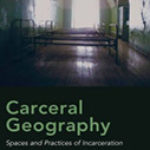Dreams And Nightmares: Immigration Policy, Youth, And Families

Authors: Marjorie S. Zatz and Nancy Rodriguez
Publisher: Oakland, CA: University of California Press, 2015. 216p.
Reviewer: Susan Bibler Coutin | March 2017
Immigration policies established by the Obama administration have been and are being challenged by President Trump and his administration. At the same time, campuses across the United States are declaring themselves sanctuaries for undocumented students, and unaccompanied minor children are continuing to cross the U.S.-Mexico border from Central American and other nations. In this context, Marjorie Zatz’s and Nancy Rodriguez’s book, Dreams and Nightmares: Immigration Policy, Youth, and Families, could not be more timely.
In this book, Zatz and Rodriguez examine the role that prosecutorial discretion has played in immigration policy-making in the absence of comprehensive immigration reform. They focus particularly on the challenges experienced by children and youth who either have immigrated to the United States themselves, in many cases without authorization, or are members of mixed status families in which close relatives (siblings, parents) are undocumented. Instead of highlighting the voices of youth themselves, Zatz and Rodriguez have a systemic focus, that is, they analyze the maze of government and nongovernmental agencies whose decisions shape youths’ lives. Their goal is to identify the structural factors that adversely impact these children and youth as well as policies that could mitigate this harm. They find that the U.S. government’s policies toward children are structured by a fundamental conundrum: on the one hand, the government is responsible for protecting children, but on the other hand, the government also polices borders. All too often, they find, this conundrum results in policies and decisions that fail to prioritize children’s best interests, such that children’s dreams of a better future become nightmares involving physical danger, family separation, and legal uncertainty.
Dreams and Nightmares is based on three sources: (1) the authors’ formal and informal interviews with 40 individuals, including immigration attorneys, members of NGOs that focus on child welfare, current and former U.S. government officials, and an official in a Central American embassy; (2) observations of meetings of a working group on unaccompanied minors; and (3) analysis of reports, documents, and statistics generated by government agencies, NGOs, and scholars. Most of the interviewees were interviewed multiple times, and drafts of the manuscript were made available to interviewees for comment. This material enables Zatz and Rodriguez to detail both the workings of the agencies that children encounter and the perspectives of the individuals who work within these agencies.
Theoretically, Dreams and Nightmares is informed by literature on the street-level bureaucrats who put law into action in ways that do not always comport with law as written. Zatz and Rodriguez point out that in the case of child migrants and immigrant youth, a wide range of such decision-makers are responsible for interpreting and applying policy, ranging from the officials who determine whether or not youth are unaccompanied minors, to NGO-staff who refer children for services, to Immigration and Customs Enforcement (ICE) agents who must decide what to do about children who are left behind when parents are taken into detention. The authors note that such “street-level bureaucrats make what may well be life-and-death decisions based on very limited information” (p. 149). In addition to focusing on the employment of discretion, the authors identify the structural factors that adversely affect children or mitigate harm. By “structural,” they mean aspects of both the policy-making apparatus – such as the lack of discretion afforded to judges or the creation of an on-line locator system through which family members can find their detained relatives – and the social system, such as the barriers experienced by mixed status families.
The primary strength of this book is not its contribution to theory however, but rather its comprehensive account of the challenges faced by youth, and the ways that these are often exacerbated by the very systems that, in theory, ought to protect these young people. Each substantive chapter takes up a key challenge. Chapter Two describes the history of prosecutorial discretion, focusing on the issuance of various memos that instructed immigration officials regarding enforcement priorities. According to these memos, youth should have been a low enforcement priority, yet according to the advocates interviewed, these directives were followed infrequently. Chapter Three recounts how the Deferred Action for Childhood Arrivals or “DACA” program was created as a form of prosecutorial discretion designed to protect young people who immigrated as children, met or were working toward specific educational requirements, had been continuously present for five years, and met certain age restrictions and entry date requirements. DACA, the authors note, has been seen as a model for how a legalization program could be implemented, but also has key limitations, most importantly, the fact that it can be rescinded by a future president at will (something that may well happen under the Trump administration). Chapter Four examines the challenges that detention and deportation create for mixed status families. Sadly, immigration status may trump kin ties, resulting in detained and deported parents losing their rights to their children. Chapter Five focuses on the influx of unaccompanied minors, predominantly from Guatemala, Honduras, and El Salvador. Tragically, these children are often caught between violence or abuse in their countries of origin and an enforcement-oriented immigration system in the United States. The concluding chapter identifies overarching factors that shape policy-making regarding immigrant youth.
Dreams and Nightmares is clearly written, with a minimum of academic jargon and an abundance of first-hand accounts from policy-makers, attorneys, and advocates. I saw the book as having three key strengths. First, it provides important and often horrific details that the public ought to know about how unauthorized immigrant children fare in their journeys to the United States, as well as after arrival. For example, the authors cite a United Nations High Commission for Refugees report which found that 58% of the unaccompanied minors traveling to the United States describe suffering the degree of harm that makes them deserving of international protection. Many families give girls who are immigrating without authorization birth control prior to departing because the risk of rape and sexual assault while traveling is so high. Noncitizen children who are involved in minor offenses suffer consequences that are hugely disproportional to those faced by US citizen youth who commit the same offenses. Zatz and Rodriguez cite the case of a boy who took away a young girl’s i-phone during a disagreement, and was therefore detained and placed in deportation proceedings, instead of merely being reprimanded, as might be typical in similar circumstances. U.S. citizen children of undocumented relatives are also at risk, however. If their parents are placed in deportation proceedings, they may have to testify on their behalf, which could be traumatic. Further, detained or deported parents can lose access to their children, who may be placed in foster care and then adopted into other families – a situation that is reminiscent of the harm experienced by Native American children who were removed from their families.
Second, the authors’ analysis of the systems that immigrant children confront is invaluable. The book’s introduction provides a detailed overview of the recent events – the 2008 recession, the 2012 elections, the increase in unaccompanied minors in 2014 – that have influenced immigration policy-making, resulting in a system that is replete with contradictory pressures. In essence, they note, “the state must protect the youth against itself, in its enforcement capacity” (p. 135). Repeatedly, the authors recount, the enforcement orientation of ICE and Customs and Border Protection (CBP) override concerns about children’s welfare. Efforts to secure passage of comprehensive immigration reform were preceded by a rise in enforcement, which in turn, overwhelmed immigration court dockets, making hearings more hurried. Prosecutorial discretion (PD) could be exercised in ways that alleviate such pressures, yet the ICE union’s staunch opposition to PD made this difficult. Children themselves, the authors note, are in contradictory positions. They make decisions to migrate, but then, when in US custody, are treated as minors without decision-making power, yet in the immigration court system, they are expected to represent themselves. The degree to which immigration and child welfare systems work against each other is striking.
Third, their many conversations with advocates and with policy makers enable Zatz and Rodriguez to propose policy recommendations that are both sensible and feasible. Reading Dreams and Nightmares, one has the sense of being in the middle of policies which seemingly frequently take new turns, and yet are also fragile. Examples of policy recommendations put forward by the authors include assigning children an advocate (like a guardian ad litem) to look out for their interests and providing state-supported counsel to minors in immigration proceedings. The very feasibility of such recommendations could be seen as a weakness, in that some might argue that these sorts of policy changes tweak, rather than dismantle the existing system. For example, the authors note that U.S. military and economic interventions in children’s countries of origin contributed to the circumstances that led children to immigrate, yet the they do not suggest changes that would dramatically alter U.S. military or trade policies. At the same time, perhaps such larger scale considerations are beyond the scope of this book, which instead lays out the legal options available to child migrants, describes the challenges associated with each, and proposes creative interim solutions.
All in all, Dreams and Nightmares presents a compelling analysis of U.S. policies regarding child migrants, and should be read now, as these policies are coming under renewed scrutiny in the Trump administration. The authors effectively document the agonizing dilemmas and potentially devastating outcomes of policies regarding child migrants. Throughout, they advocate resolving these dilemmas by prioritizing the best interests of the child above other considerations. In so doing they imply, but do not state, that children, whether migrant or otherwise, are the responsibility of all nations, not only those where they hold legal status. Following this key recommendation would help to prevent future policies from harming children and could establish a level of protection that has not existed to date.
Susan Bibler Coutin, Professor of Criminology, Law and Society and Anthropology, University of California, Irvine


